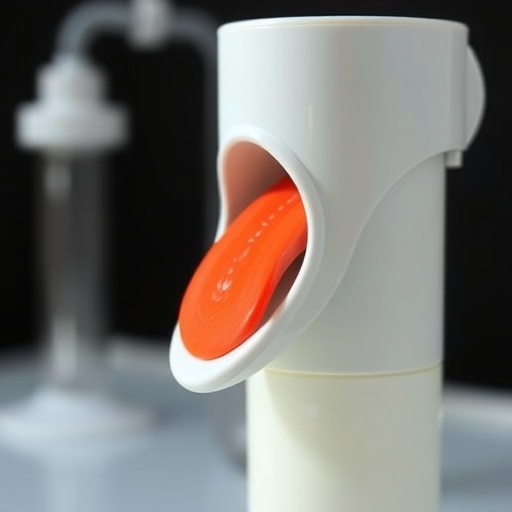Researchers are unveiling a groundbreaking technological advancement that could revolutionize the way we experience and assess the heat levels of spicy foods. The innovation comes in the form of an artificial tongue, crafted to detect capsaicin, the compound responsible for the heat in chili peppers, along with other pungent substances found in various culinary ingredients. This food science breakthrough promises to provide quick and reliable measurements of spiciness, offering an innovative solution to the limitations of traditional taste-testing methods.
The artificial tongue draws its inspiration from the science behind dairy products, particularly milk. Casein, a protein found in milk, has been known for its ability to bind with capsaicin, effectively neutralizing its fiery effects. By harnessing this natural property, scientists have developed a gel-based sensor that incorporates milk powder, enabling it to mimic the functions of a real tongue. The prototype developed by the researchers is reported in the journal ACS Sensors, marking a significant step forward in food technology and sensory science.
This inventive prototype stands out not only for its ability to detect spiciness but also for its versatility in application. The artificial tongue holds promise for various fields, including portable taste-monitoring devices, humanoid robots designed for culinary applications, and even interventions for individuals suffering from sensory impairments like ageusia, a condition where one cannot taste. Lead author Weijun Deng highlights the potential impact this technology could have on enhancing food experiences for those unable to fully enjoy the complexities of flavor due to sensory challenges.
Traditional methods of measuring flavor compounds in foods often involve subjective taste testing and complex laboratory procedures, which can be time-consuming and require a trained palate. The researchers aim to provide an alternative with their artificial tongue, which can deliver objective data quickly and efficiently, thereby streamlining the assessment of food spiciness in various settings, including food manufacturing and culinary arts.
Creating the artificial tongue involves a detailed process combining various materials. The base of this unique sensor is formed by blending acrylic acid, choline chloride, and skim milk powder into a solution that can be shaped into a tongue-like film. Subjecting this mixture to ultraviolet (UV) light cures the gel into a flexible, opaque substance capable of conducting an electrical current. When capsaicin is introduced to this film, measurements reveal a significant change in current, indicating the sensor’s reactive capabilities to different levels of spice in foods.
Early experiments show that this milk-based sensor can effectively detect capsaicin concentrations from below human perception levels up to those that cause pain, known as the oral pain threshold. Moreover, preliminary testing demonstrated the sensor’s sensitivity to a spectrum of pungent compounds frequently used in hot sauces and other spicy foods, including garlic, ginger, horseradish, black pepper, and onion. These findings open new avenues for applications in the food industry, where flavor profiling is essential yet often challenging to manage accurately.
As a proof-of-concept, the team evaluated the artificial tongue using a diverse array of pepper types and popular spicy foods, including various hot sauces. The results yielded a strong correlation between the readings from the artificial tongue and the subjective ratings provided by human taste testers. This consistency underscores the viability of the milk protein-enriched sensor as a reliable tool for assessing spiciness levels without subjecting testers to discomfort or risk.
Furthermore, the implications of this technology extend beyond mere measurement. The capacity to quickly ascertain the heat level of food could significantly enhance consumer safety and satisfaction, as it could prevent consumers from unwittingly encountering spicy items that exceed their tolerance. Restaurant and food manufacturers stand to benefit notably, as the ability to standardize spiciness levels could improve product consistency and help cater to customer preferences more effectively.
The team’s findings suggest a promising future where culinary experiences can be optimized through technological advancements. By integrating this artificial tongue into the food evaluation sector, it could reshape the landscape of how spicy foods are perceived and enjoyed. The fusion of biochemistry and engineering exemplified by this research underlines the exciting potential for interdisciplinary collaboration in addressing everyday challenges in the culinary world.
As the development of the artificial tongue progresses, it may lead to further innovations in taste technology. Ongoing research could uncover additional applications for taste sensors in the culinary arts, helping chefs explore new flavors while also highlighting the health implications of spice consumption. This could pave the way for tailored dietary recommendations based on a person’s spiciness tolerance, enhancing individual dining experiences across diverse cultural cuisines.
In conclusion, this breakthrough in artificial tongue technology represents a significant advancement in sensory science, food technology, and consumer safety. Through its innovative approach to detecting spiciness, researchers have set a precedent for future developments in taste measurement that could expand our understanding of flavor, enhance accessibility for those with sensory challenges, and enrich the culinary landscape as a whole. As we await further exploration into this fascinating field, the implications of such research will likely continue to resonate throughout the food industry and beyond, promising a flavorful future informed by scientific inquiry.
Subject of Research: Artificial tongue for detecting spiciness in foods
Article Title: A Soft and Flexible Artificial Tongue for Pungency Perception
News Publication Date: 29-Oct-2025
Web References: ACS Sensors DOI
References: Weijun Deng et al. (2025), ACS Sensors
Image Credits: Weijun Deng, adapted from ACS Sensors 2025, DOI: 10.1021/acssensors.5c01329
Keywords
Chemistry, Food science, Artificial intelligence, Sensory technology, Capsaicin detection, Culinary innovation, Health and wellness.




